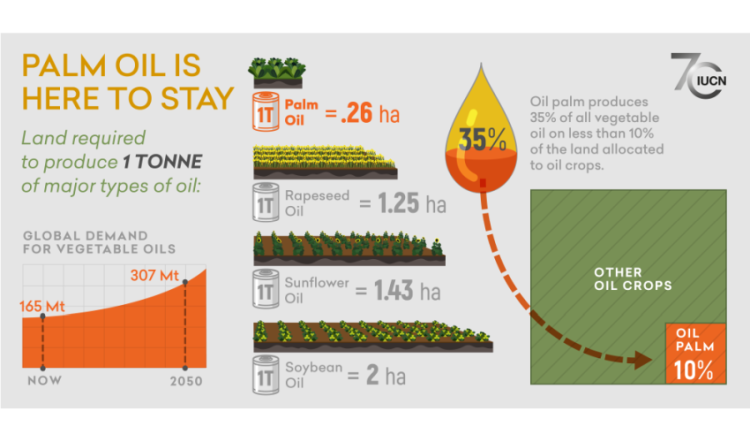
Palm oil is used in making products such as soaps, biscuits and noodles while crude is a key input for detergent and packaging, among others. Palm oil has dropped below $1,300 per metric tonne from highs of $1,800-1,900 while crude oil has retreated to less than $107 per barrel, down from a peak of about $130.
Packaged consumer goods makers said they will not slash prices despite the correction in two crucial commodities - crude and palm oil - but will instead slow the pace of price increases.
This high demand of increasing Palm oil demand in developing countries affect the essential oil market. The global palm oil market size was valued at USD 63.7 billion in 2021 and is anticipated to grow at a compound annual growth rate (CAGR) of 5.1% in terms of revenue from 2022 to 2030. The market is driven by exponentially growing demand from the food, beverage, biofuel, energy, personal care, and cosmetics industries.
Major manufacturers are in the Asia Pacific region due to the ease of availability of raw materials in the region. The market is highly competitive as well as comprehensive in nature owing to the presence of a large number of all-scale players who try to gain a competitive edge over others with their high production, superior distribution networks, product quality, and various competitive strategies.
Indonesia is the largest palm oil producer as well as exporter of the same. The country exports the product globally. The government also supports the cultivators of palm oil plants. It is a major source of income for many small and medium-scale producers in the region. The industry is majorly responsible for the development and upliftment of the cultivators in the region.
Conventional segment dominated the market with a revenue share of more than 99% in 2021. This is attributable to the low price and easy availability of the segment. Conventional oil palm farms are a crucial source of income for the small and medium-size cultivators as they can increase production with the help of synthetic chemicals. The conventional nature segment is more popular in low-income countries with high populations. Contemporary to conventional nature segment is organic nature segment which holds a very little share of the market due to difficulties in production which reduce the availability of the product in the market. The stringent regulations for the production as well as very expensive products necessary for the production such as specialized soil maintenance product makes it financially infeasible and difficult for the manufacturers to produce in large quantities. Although increasing awareness about the benefits of organic products is anticipated to attain a rapid growth rate.
Food & beverages dominated the market with a revenue share of more than 65% in 2021. Its high share is attributable to increasing usage of the product end-use applications of the industry and increasing product portfolios that demand palm oil as a raw material. The rise in the global population has also affected the global product growth boosting the product demand in the international market. With a scanty difference between their revenue share following the food and beverage end-use segments are personal care & cosmetics and biofuel & energy end-use segments. These are growing segments and are expected to attain prompt growth in the coming years as the advancement of technologies will occur.

|

|
Currently, there are no comment.
Login to comment